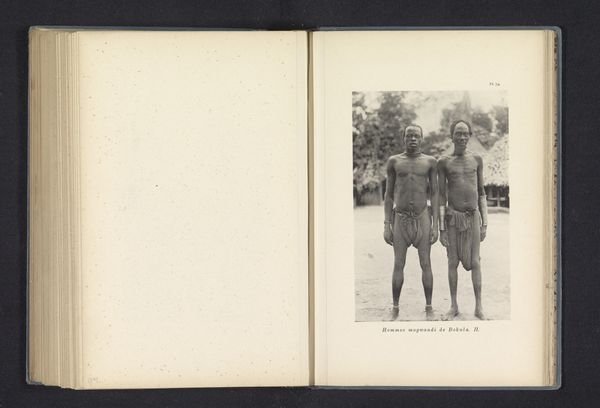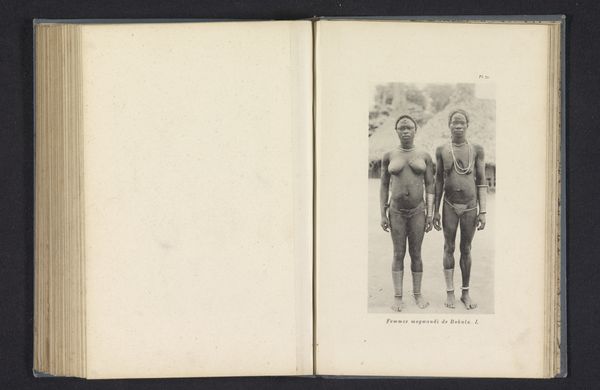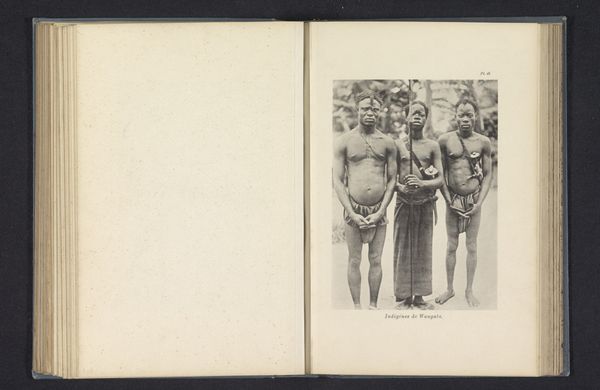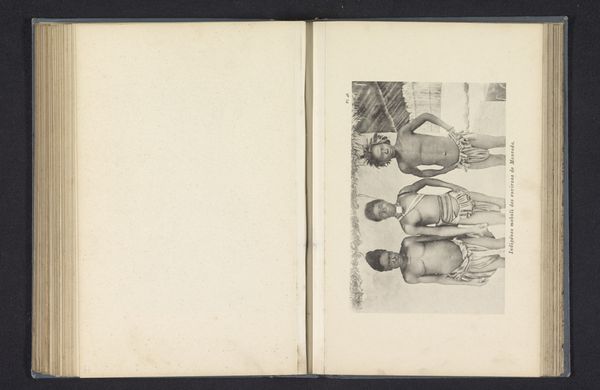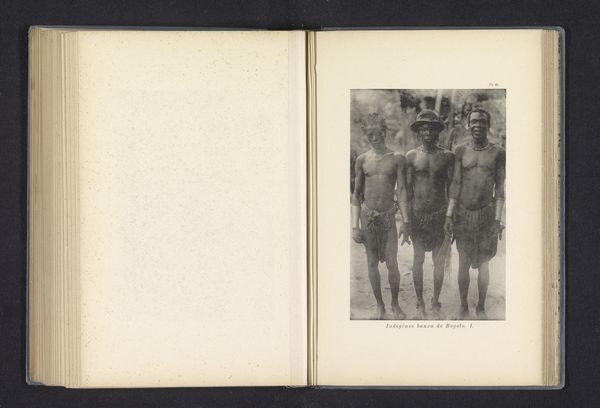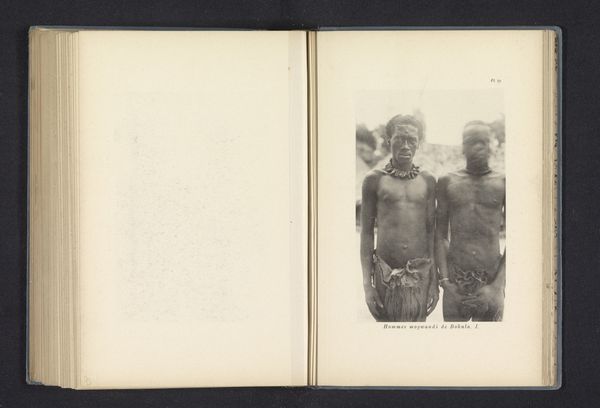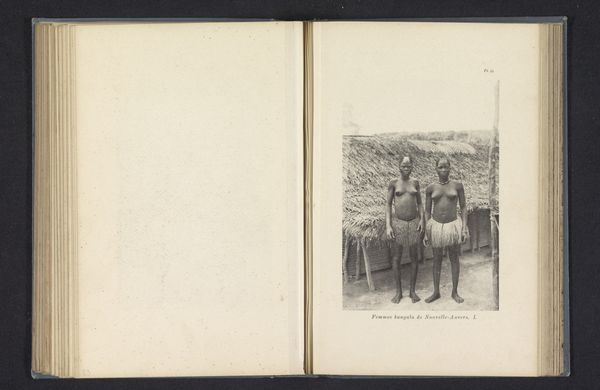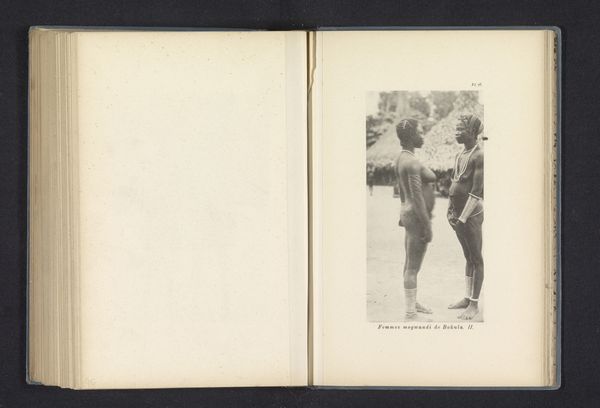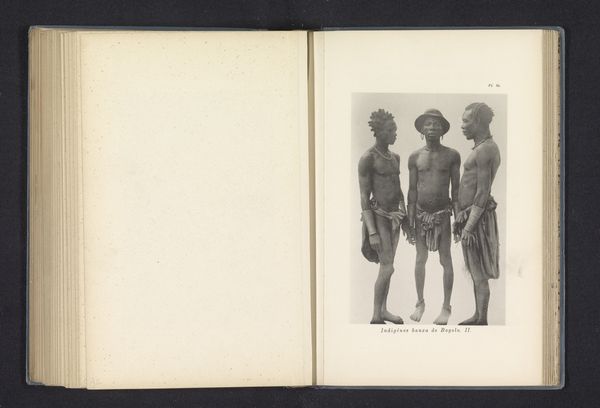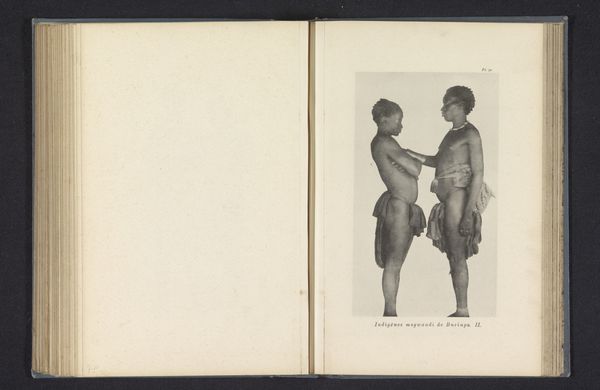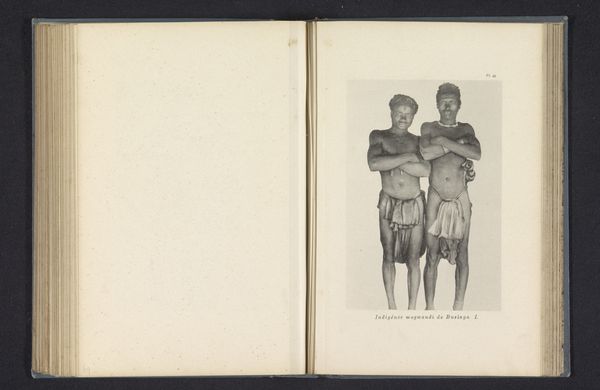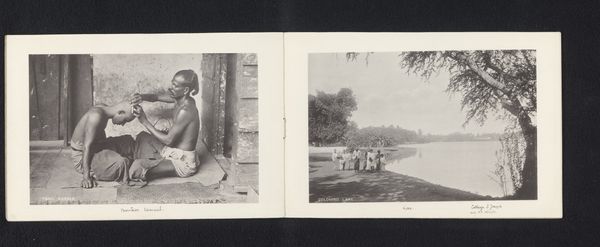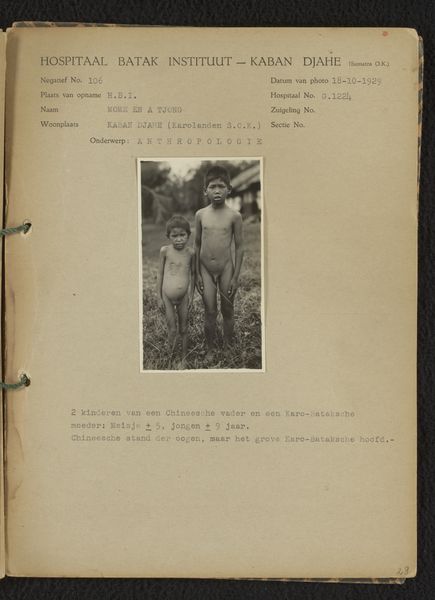
#
aged paper
#
homemade paper
#
paper non-digital material
#
paperlike
#
sketch book
#
paper texture
#
personal sketchbook
#
folded paper
#
thick font
#
paper medium
Dimensions: height 161 mm, width 102 mm
Copyright: Rijks Museum: Open Domain
Curator: It feels incredibly intimate, doesn't it? Like stumbling upon a secret. There's this aged paper... like a forgotten memory clinging to it. Editor: Absolutely. We are looking at a page from Franz Thonner's sketchbook, circa 1896, which contains a photograph titled "Portret van twee vrouwen te Mbinga", depicting two women in Mbinga. What strikes you about it, curator? Curator: The women's gaze. It's so direct, unflinching. It makes me wonder about their lives, their stories that will forever stay untold, trapped within that monochromatic snapshot of time. Also, the way the image is placed on the page—almost carelessly, not perfectly aligned. That gives it such an immediate, candid feeling. Editor: I'm struck by how their presentation—or lack thereof—is documented by a European man during a period of intense colonial activity in Africa. We must ask how the photographer's presence and purpose impacted the subjects and their representation. There’s power inherent in who does the looking and who is seen, especially considering the colonial context. Curator: Ah, yes, the Gaze, inescapable. And you're right, I almost want to tear myself away from the art, but it's still so arresting. The women seem so...grounded. They're standing on Earth. In a time where Black bodies were so often caricatured, these women possess a fierce quiet. But there are also traces of the European hand... Editor: Indeed, how the subjects may have been objectified or exoticized according to the then-current scientific or pseudoscientific discourses about race and the Other. But isn’t there also the possibility to re-appropriate or re-interpret such imagery by critically examining it through the lens of intersectional paradigms, such as postcolonialism? Curator: Always something lurking. I mean...even without understanding anything about the historical context, I feel invited to bring all these narratives and emotions into conversation. Isn't that where the beauty lies...a continuous act of imagining ourselves in relationship with one another? Editor: Precisely. By confronting the uncomfortable aspects, by interrogating our assumptions and biases, we can hopefully move closer to a more nuanced understanding of both the artwork and our shared human experiences. Curator: Yeah...maybe the women are inviting us into a bigger story—one where they finally get to tell it themselves.
Comments
No comments
Be the first to comment and join the conversation on the ultimate creative platform.
